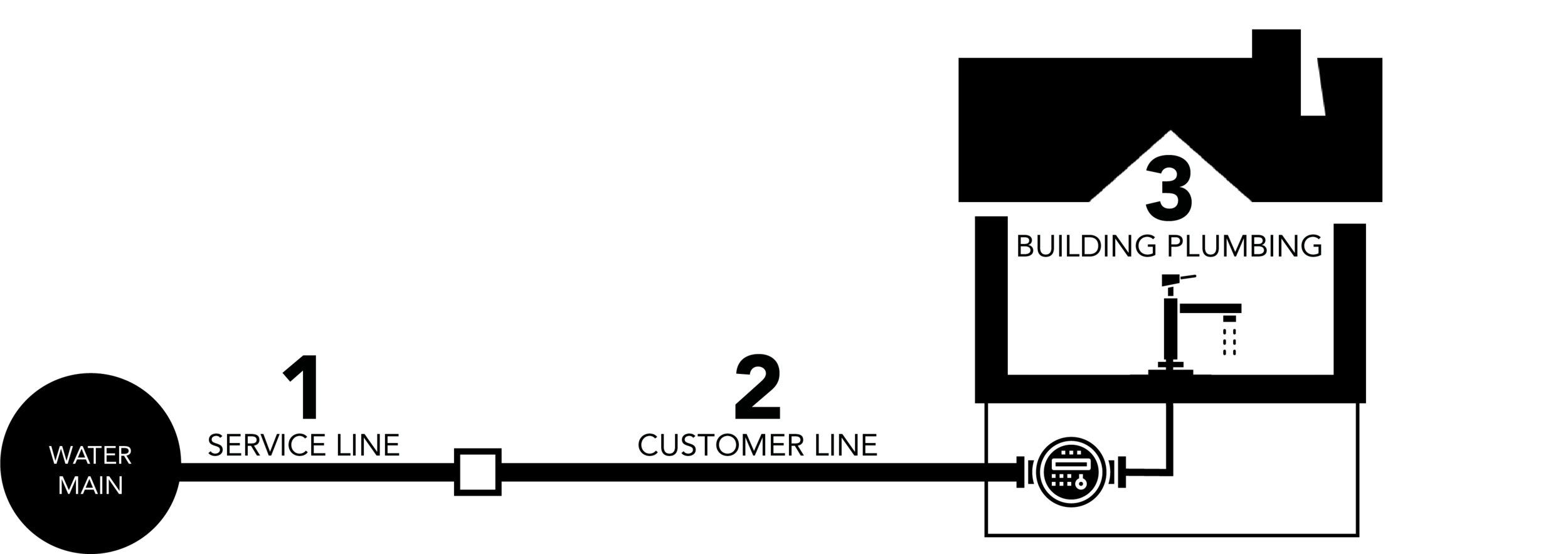The US Environmental Protection Agency (EPA) is expected to release updated Lead and Copper Rule Revisions (LCRR) with the goal of reducing public exposure to lead and copper in drinking water (the final rule is pending). The Wisconsin Department of Natural Resources (WDNR) is required to establish statewide regulations that are no less stringent than the LCRR, and to develop and implement procedures to administer and enforce the new rule provisions.
To comply with the LCRR, all regulated water systems must complete a comprehensive materials inventory by the anticipated compliance date of October 16, 2024. The inventory must include all service lines connected to the public water distribution system regardless of ownership status (e.g., where service line ownership is shared, the inventory would include both the portion of the service line owned by the water system and the customer-owned portion of the service line) (source: WDNR).
Learn how to complete your materials inventory effectively and efficiently with tips from our experts.
What is the LCRR Materials Inventory?
The LCRR materials inventory requirement was established to help water systems more effectively address the presence of lead in drinking water. It will also allow state regulatory agencies to better determine the best locations for annual drinking water testing.
Who needs to complete the LCRR Materials Inventory?
All permitted water systems in the state of Wisconsin are required to comply with the new LCRR, including the completion of a materials inventory.
What Needs to be Included?
Per the WDNR, your materials inventory must include the following information on the utility side and customer side of the lateral, as well as the building plumbing.
Image Courtesy of WDNR
For the full list of WDNR requirements and FAQs, view their full guidance.
How Should I Conduct the LCRR Materials Inventory?
review existing digital data and COMMUNITY RECORDS
By consulting existing data, your utility can reduce the number of physical inspections necessary to complete your materials inventory. Doing so will significantly decrease staff time and cost associated with the process.
To be as efficient as possible, first compile the data you already have easy access to in your digital community databases, such as:
GIS data
Water meter records
Review other existing community records, including:
Local plumbing codes/ordinances
Tap cards from service installations
Plumbing permits obtained for structure renovations and/or service line replacements
Plans/specs from water main installation, rehabilitation, and/or replacement
Conduct visual inspections
To collect incomplete inventory data, your utility will need to complete in person, visual inspections. To make that process a little easier, we suggest:
Ask staff to perform inspections and confirm materials information during routine work, e.g:
Meter or valve replacements
Leak repairs
Sanitary survey cross-connection program inspection
Assign subdivisions to staff to eliminate overlap
Subdivisions where homes were constructed within a certain time period will likely have service lines and plumbing with the same materials and can be mass updated in some tracking tools
Communicate with the public early in the process
Use newsletters, social media, and flyers to keep residents informed and lessen the need for return visits
If no one is home, leave a flyer so the resident can schedule a visit with a staff member
Track Materials and Progress in a GIS
The LCRR materials inventory requirement will place a significant demand on water system staff and resources. Using a GIS to track your inventory can lessen that burden and help streamline the process.
Per the WDNR, all inventory information must be in a database or spreadsheet, ideally connected to GIS spatial data. It must also be available to consumers and be easily updated, as the LCRR requires an annual inventory update.
Without an effective method for tracking/recording inventory progress, reaching LCRR compliance could prove to be a very real challenge. Failure to complete a materials inventory by the anticipated compliance date could impact your utility’s access to funding for LSL replacements and other water related infrastructure improvements.
We can Help!
R/M developed InventoryAlly™, a GIS-based tool that streamlines the LCRR materials inventory process and eliminates the need for paper forms and repetitive data entry. InventoryAlly™ allows your staff to efficiently collect materials data using mobile devices and laptops while performing inspections. You can easily visualize progress, materials, and send data to the WDNR.
Using our knowledge of municipal water infrastructure and your existing data sources, we work with your utility to prepopulate your application with as much data as you have available, reducing the number of physical inspections needed.
Learn More
To learn more about the anticipated Lead and Copper Rule Revisions and how R/M can help your community complete your materials inventory requirements more efficiently and effectively, please contact us today!















